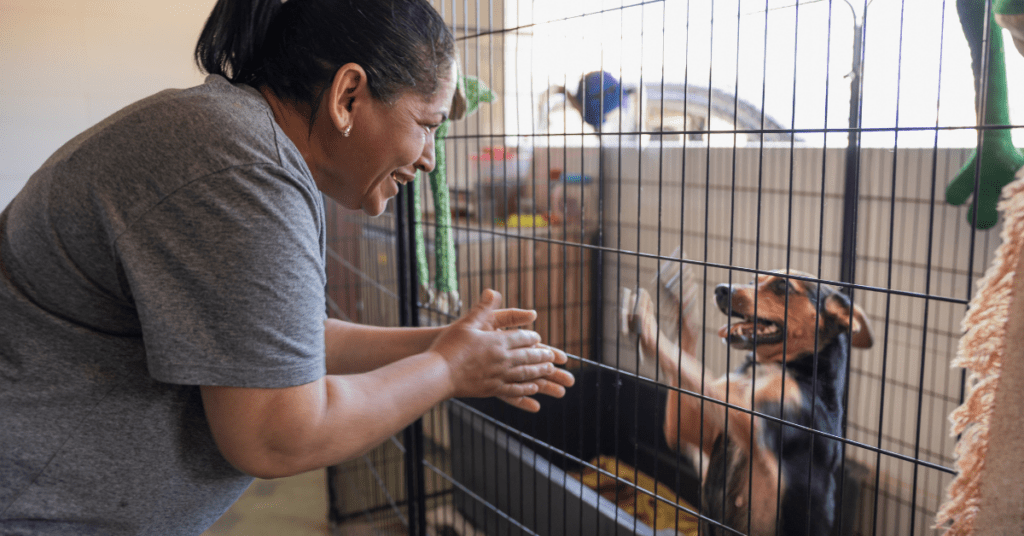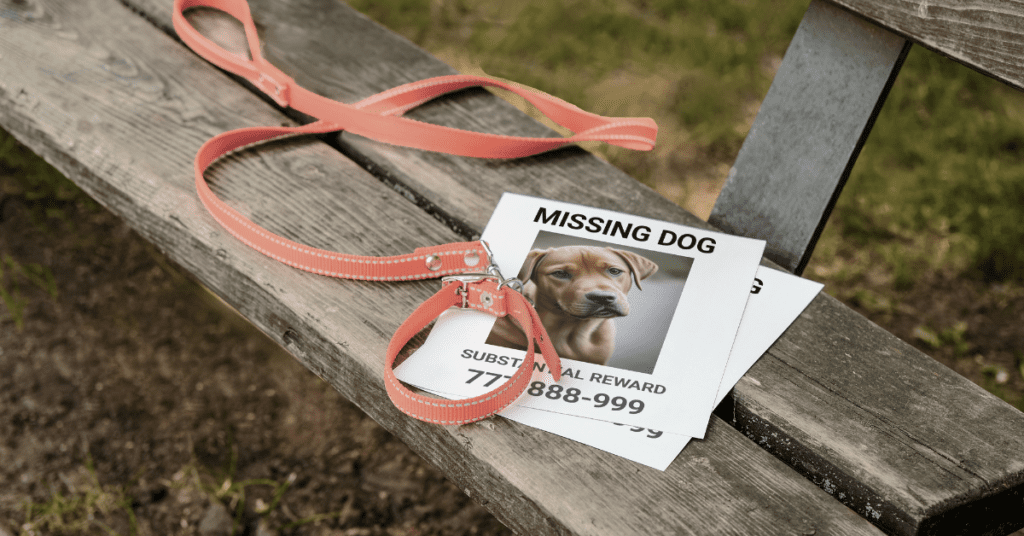
This article was originally printed in the American Bar Association’s Committee News.
By Brian Chase, Michelson Philanthropies

Brian Chase is General Counsel for Michelson Philanthropies, which includes the Michelson Found Animals Foundation. He received his undergraduate degree from Wake Forest, and his J.D. from Tulane.
What do a puppy and a Picasso have in common? At first glance, not much. As a general rule, a puppy is not a great investment vehicle. A painting by Picasso, on the other hand, is terrible at snuggling. Very few large corporations put puppies in their office lobbies. And, to the best of my knowledge, fine art never licks your feet when you are feeling down.
But companion animals and fine art do have one thing in common. They are both considered personal property under the law, much like a toaster or a car. The law of art ownership is evolving, albeit slowly, to recognize the fact that fine art and antiquities are legally distinct from normal consumer goods.
Similarly, the law, finally, also seems to be catching up to the fact that pets have feelings and emotional bonds with their owners that puts them in a class of possession entirely distinct from other forms of personal property.
But many traditional legal means that determine ownership of personal property continue to be woefully inadequate to determine the ownership of a “thing” that has four legs and can run away on the Fourth of July, and probably has very little monetary value.
The current legal framework frequently causes ownership disputes, and the disputes can be both legally and emotionally fraught. Due to the vague definitions in statutes, people are often left to cipher through these unclear laws with very limited remedies available to determine or confirm ownership.
This is especially true when pets and fine art are acquired through shady means. Fine art is often smuggled, stolen, and historically has been pillaged by colonial powers and armies, making ownership determinations maddeningly difficult such as the infamous Mona Lisa.
Pet ownership faces similar challenges as owners may lose their furry family member to unscrupulous practices by rescues and others who claim that they are trying to help pets or during the bitter battles of divorce or breakups.
Further, owners face significant financial hardship when trying to determine or clarify their ownership rights.3 For example, the owner of fine art or a pet that is illegally possessed by another person can sue for a writ of replevin, but the cost of doing so is frequently prohibitive.
One court has observed that “the reported cases for replevin of a pet dog are few, in part because of the legal expense involved in maintaining such an action.” On the other hand, utilizing the cause of action of replevin for fine art is well worth it due the significant monetary value if said art or sculpture is from a world-renowned artist.
Endnotes: 3 Another distinction between fine art and pets is that there is a strong financial incentive to recover lost or stolen art and the laws surrounding ownership of art have been clarified by many appellate decisions. Unfortunately, most pet owners do not have the resources to take ownership disputes to court, much less to appeal any trial court decision. So, there is very little case law clarifying the many issues surrounding pet ownership.
Stray Holds

Photo credit: corolens
There are some states, by statute, that clear the title to a stray pet if the pet is held for a certain period by a municipal shelter or an authorized humane society. These statutes get around the general common law rule that a person who inadvertently loses property retains title.
After the statutory holding period expires, the animal may be euthanized or adopted without subjecting the animal shelter or adopter to exposure. But shelter hold periods do not guarantee clear ownership of a pet.
The law varies by state, and negligence or misconduct, intentional or unintentional, on the part of a shelter might cause lengthy legal disputes between the true owners and subsequent rescues and/or new owners. For example, in Lira v. Greater Houston German Shepherd Dog Rescue, the owners’ German Shepherd escaped and was found by the City of Houston’s animal control department.
Three days later, the animal control department reached out to a local rescue to see if they would accept the German Shepherd. Meanwhile, the owners were trying to locate their missing animal.
Upon finding out their dog was transferred to the local rescue, they requested the return of their beloved German Shepherd, but the rescue refused claiming they were now the true owners and the owners were neglectful because the dog tested positive for heartworms, was not neutered, and was not wearing tags or microchipped. The owners sued and the trial court ordered the rescue to return the German Shepherd to their owners.
The rescue appealed, and the Court of Appeals held that the owners failed to redeem their dog timely and did not have the right to possess their dog. The owners then appealed to the Texas Supreme Court which reversed and upheld the trial court’s decision to enjoin the rescue group and ordered the return of the German Shepherd to his true owners finding the City’s stray hold period did not clear title to the true owner’s right to claim their property.
Texas does not have a statutory stray hold period, but at the time Lira was decided Houston’s municipal code stated that “It shall be the duty of the officer in charge of the animal control center to offer for sale any and all healthy animals impounded under the terms of section 6–102 and not redeemed within three days. . . . The person entitled to the possession of any animal shall be entitled to redeem the same upon paying the purchaser double the amount paid by him for such animal and his reasonable expenses for keeping the same.
Any animal not so redeemed within 30 days from the date of the sale shall become the absolute property of the purchaser.” The Court reasoned that the term “impounded” did not suggest a transfer of ownership even to a rescue or the loss of the owner’s right to the return of his property and the Liras retained their ownership rights to their German Shepherd.

Photo credit: Helena Lopes
Some of this confusion stems from the phrasing of shelter stray hold laws. Although the laws certainly imply that holding the pet for the relevant period of time clears title, the statutes don’t unambiguously say so. They generally just state that after the hold period the shelter can dispose of the animal, typically euthanasia or adoption, without specifying that ownership of the pet has been transferred by operation of law.
The actions of municipal shelters can also void the transfer of ownership that would typically be allowed following a shelter hold period. In Feger v. Warwick Animal Shelter, plaintiff claimed that her cat had been stolen, and the shelter accepted the cat from a third party with knowledge that the cat had been stolen.
The trial court ruled in favor of the shelter, holding that the shelter was authorized to put the cat up for adoption by statute. The owners appealed and were victorious where the higher court reversed, noting that the relevant statute only empowered the shelter to accept cats that were stray or otherwise homeless. The court reasoned that, if the plaintiff were able to prove that her cat was stolen and the shelter accepted the cat with knowledge of the theft, the statute simply didn’t apply.
In contrast, in Alvarez v. Clasen, a cat owner sued a neighbor because they had trapped their cat, who was roaming outside, and took the pet to an animal shelter. The shelter later euthanized the cat. The court held that, because the cat was outside on public property when the neighbors trapped it, the neighbors had the right to bring it to the shelter, which was empowered to “impound any cat … found to be at large.” Both the neighbor and the municipal shelter acted in compliance with the terms of the ordinance, so they could not properly be sued.
All three cases illustrate the difficulties in relying on a shelter stray hold to clarify title/ ownership to a pet. If the shelter does not comply with the details of the statute, title to the pet may not transfer, and someone adopting from the shelter might be sued in an action to recover the pet. Although statutes mandating impound periods may seem clear, in practice they can be anything but.
Adverse Possession

Photo credit: Andrew Neel
Many lost or abandoned pets are placed in new homes without going through a shelter at all. It is common for pets to be given to friends or relatives with no written contract to memorialize a transfer of ownership. Many people find pets on the street and don’t bring them to the shelter.
The transfer of ownership of pets is frequently informal, adding complications to any disputes that may arise by their true owners. The common law doctrine of adverse possession is familiar to anyone who has taken a first-year property class. To demonstrate ownership by adverse possession, a person must show that they have actually possessed the property in an “open and notorious” fashion, under the belief that the property is theirs, against the interest of the owner, and the actual possession must be uninterrupted for a specified period of time. Most states have codified these rules in some fashion.
The doctrine of adverse possession, however, is much more difficult to assert when dealing with personal property rather than real estate. How does one “open and notoriously” possess fine art or a pet? In California, the period of possession required to adversely possess property is only five years, but California is an outlier.
Most states require possession of property for much longer periods. Similar to the cause of action of replevin, adverse possession litigation to clarify ownership for fine art or a sculpture by a major artist can make financial sense while spending such a sum to recover a kitten, not so much. This is especially true, when the possession period sometimes may be longer than the lifespan of most pets, making adverse possession a tool of limited utility when it comes to determining pet ownership.
Lost Property Statutes

Photo credit: Marina Gordejeva
While the law of adverse possession may not be a useful tool for determining pet ownership, state lost property laws might. Lost property laws generally require a relatively brief period of public notice before title is transferred to the finder (or to the state, depending on the specific laws). But these laws were not written with pets in mind.
For example, Connecticut requires that the finder of lost property surrender it to the police who must keep the property for six months. I seriously doubt that most police departments would be willing to care for a stray cat for half a year to comply with the statute.
However, at least one court has held that a lost property statute applies to household pets. In Mary Morgan v. Zane Kroupa the Vermont Supreme Court held that the applicable lost property statute could apply.
Although the Court noted that the reference to “beasts” in the statute clearly referred to agricultural animals and horses, rather than to dogs; the Court found that since the pet’s finder had diligently attempted to locate the owner and had cared for the dog for a year, the statutory requirements were met. The Court noted, in part, that:
“Ordinary common law or statutory rules governing lost personal property therefore do not provide a useful framework for resolving disputes over lost pets. Instead, courts must fashion and apply rules that recognize their unique status, and protect the interests of both owner and finder, as well as the public. In this regard, the trial court was correct that family law provides an imperfect analogue. However strong the emotional attachments between pets and humans are, courts simply cannot evaluate the “best interests” of an animal. Recognizing, however, the substantial value that society places on domestic animals, it is proper that the law encourage finders to take in and care for lost pets. A stray dog obviously requires care and shelter, and left unattended could pose hazards to traffic, spread rabies, or exacerbate an animal overpopulation problem if unneutered. A rule of decision that made it difficult or impossible for the finder to keep the animal after many months or years of care and companionship might deter these salutary efforts, and would not be in the public interest.”
Once again, current legal structures come up short when it comes to determining pet ownership, but lost property statutes may provide a clearer framework than common law adverse possession.
Divorce/Breakup

Photo credit: RDNE Stock project
Illinois, Alaska, and California have enacted legislation directing courts to consider the “well-being” or “best interest” of the animal when determining pet custody in divorce cases. Other states rely on a mixed bag of precedent and judicial discretion when making ownership decisions.
The recent trend in case law is to treat companion pets as more than just property and to recognize the “cherished status accorded to pets in our society.” Courts have acknowledged that pets fall in a “special place somewhere between a person and a piece of property.”
Thus, intangible factors involving the welfare of the animal and the emotional connection between the animal and parties are being increasingly recognized by courts. This trend, however, is gaining ground slowly.
Most pet owners do not have the financial resources to dispute pet custody in a contested lawsuit, much less to bring a case through the appeals process. This is an issue where statutory clarification would be extremely welcome.
Conclusion
Determining the ownership of pets or fine art can be difficult, complex, and contentious. But the laws concerning fine art ownership have been clarified by the courts due to the value of the objects in question.
Nobody minds spending fifty thousand dollars in attorney fees to secure title to a ten-million-dollar painting. The ownership of pets does not benefit from similarly robust published precedent. Because ownership disputes are generally only heard by trial courts, the cost of bringing a claim of pet ownership can be very high.
Because we recognize that pets are more than mere chattel, we need to have an efficient and inexpensive way to adjudicate ownership rights by clarify the laws defining ownership, transfers of ownership, and the loss of ownership rights.35
Endnotes: 35 In the film Legally Blonde, law student Elle Woods, played by Reese Witherspoon, takes a more direct approach to pet custody when confronting her friend’s never-do-well ex in the following exchange: “I’m Elle Woods, Miss Bonafonte’s attorney and I’m here to discuss the legal situation at hand. Do you understand what subject matter jurisdiction is? … Well, due to habeas corpus you and Miss Bonafonte had a common law marriage which, heretofore, entitles her to what is legally referred to as equitable division of the assets, due to the fact that you have retained this ‘residence’ Miss Bonafonte is entitled to full canine property ownership and will be enforcing that ownership right now. Tell him Paulette.” “I’m taking the dog, dumbass”
The author strongly discourages first-year law students from posing as attorneys and spouting legal gibberish at an opposing party. But it makes for a great scene in a movie.
Get the latest news from Michelson Philanthropies. Sign up for our newsletter today!
